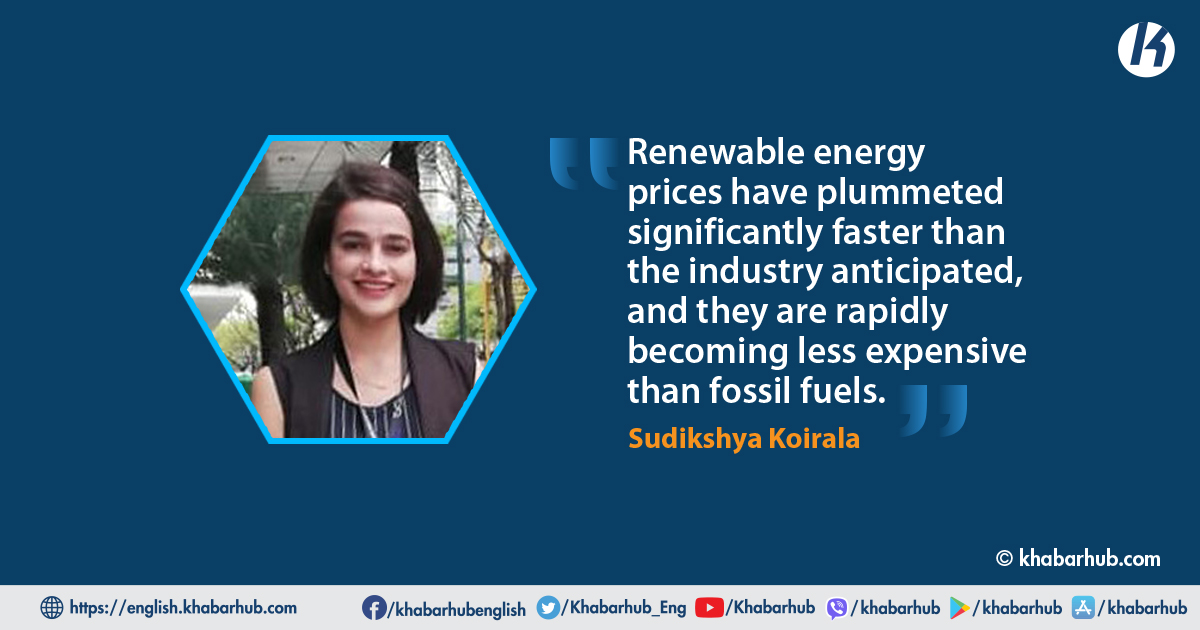In recent years we have heard a lot of noise on this topic; first, it was global warming then became climate change and slowly descending into climate crisis.
Which inherently will bring catastrophic effects on the ecosystem and disruption in almost every part of the world?
So, what really can we do about it? Do we stop consuming so much; do we radically change the lifestyle we are so adapted into?
Are we supposed to not use means of production and transportation anymore, or manufacture goods or run industries?
Then what about economic chaos as the GDP is driven mostly by consumption. And who is willing to give up what is the conundrum.
The great climate discussion is on the table but with the complexities, ever-rising, and misinformation ever increasing we are living in a global panic especially in the younger generation, doubtful about their future on the planet.
Every now and then we have a Copenhagen convention to discuss and set the goals with almost all the world leaders committing to the set goals, which mostly are not mandated but voluntary.
We barely know the cost of it and setting 200 goals sounds more like a never-ending to-do list. And even if we are successful what are the consequences and adjustments for us are not clear.
As the world transition towards post-fossil society as we dream of today there will be disruptions in the equilibrium of the economy and wealth distribution.
However, the specifically targeted policy had been successful in the past records for e.g., we don’t hear about the ozone layer anymore because the culprit CFC production and uses were banned.
Recently COP26 climate summit was held with participation and commitment from almost all nations with the mutual goal of slowing down the global temperature rise, which would have disastrous effects for the whole globe.
Prior to this summit, scientists announced that in order to reach this goal, the goal was to limit global warming to no more than 1.5 degrees Celsius.
While the climate crisis contribution is largely on part of industrial nations the effects are borne by everyone equally so one cannot exclude themselves from the issue.
At the end of the Glasgow meeting, just 0.3 degrees Celsius less warming can be committed up to the end of 2020. To perceive the road future, we must first comprehend the present. Today, fossil fuels — coal, oil, and gas – account for 79 percent of global energy production.
Is the climate crisis a solvable issue? One of the major talking points is the use of coal and fossil fuel, which causes most of the Carbon emission (especially Isotop 13) who is the main culprit in the atmosphere. So how do we deal with it without any repercussions?
Planting trees isn’t the only solution or covering Sahara with solar panels. Historically data shows there are more trees in major parts of the world than before and more use of renewable clean energy sources than ever before, but the urgency of the situation requires an urgent shift from fossil and carbon fuels.
Biotechnological advancement and nuclear energy are being which has their own cons but alternatives are apocalyptic.
According to a new analysis, renewable energy prices have plummeted significantly faster than the industry anticipated, and they are rapidly becoming less expensive than fossil fuels.
Today mostly the concern for climate for many is psychological with little to no choices at individuals’ hands but panic and anxiety induced by the fear that they can do very little to nothing about.
One school of thought is that the more people get wealthier the more sustainable and greener choices are made as they can afford it and can act upon the choices.
So the distribution of wealth and making people rich can sound very funny idea but the ripple effects are explored by many statistics on directly-indirectly related topics and wealth is not just money but a sense of security and means of living and solving issues for individuals.
When the society average spending is more the consumption is increased and GDP often reflects it as a success parameter for a country’s economy.
For us, the next steps with high bandwidth of ripple effect are in two words: Energy and Biotech. More financing is required for clean energy development and technological advancement as we are limited by our biological weapons to fight the crisis.
Some of the wonders of it has been seen in European nations as they seem to be at the forefront in case of clean energy, but sustainability is still to be achieved and financial feasibility is still a concern for developing nations, but stats show very positive data on decreasing cost of financing for clean energy projects and simultaneously the end-users price is in a declining trend.
Globally, over 800 GW of existing coal power costs more than new solar PV or onshore wind projects commissioned in 2021.
With fossil fuel’s ever-increasing rate and clean energy’s decreasing price range show, some possibilities but a reliable and sustainable source with nominal operation cost is the milestone we are yet to achieve.
As the world transition towards post-fossil society as we dream of today there will be disruptions in the equilibrium of the economy and wealth distribution.
Well, one of the direct logics applied is the cost of energy will go into the financing new clean energy which will ultimately replace the fossil fuel and the cost savings on operational expenses decreases as energy becomes cheaper or even better free and the profit goes to elevate the living standard of the society and make them more independent and competent.
According to a new analysis, renewable energy prices have plummeted significantly faster than the industry anticipated, and they are rapidly becoming less expensive than fossil fuels.
A quick shift to emissions-free ‘green’ energy might save many billions of dollars in energy expenses while also assisting in the fight against climate change.
With the increase in financing clean energy and tech projects, the decline in the cost of financing is expected to be on a declining trend.
Globally, over 800 GW of existing coal power costs more than new solar PV or onshore wind projects commissioned in 2021.
Retiring these plants would reduce power generation costs by up to USD 32.3 billion annually and avoid around 3 Giga tones of CO2 per year, corresponding to 9 percent of global energy-related CO2 emissions in 2020 or 20 percent of the emissions reduction needed by 2030 for a 1.5°C climate pathway outlined in IRENA’s World Energy Transitions Outlook.









Comment